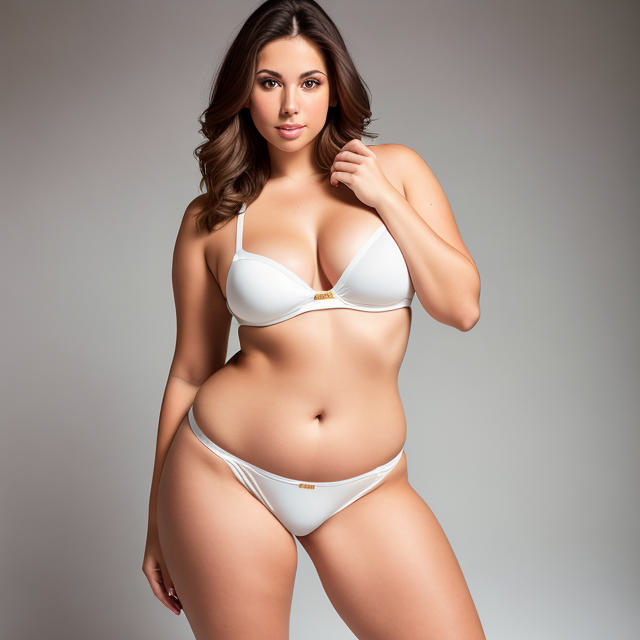Body contouring has emerged as a revolutionary approach for those aiming to redefine their physique and enhance self-image. This method transcends traditional weight loss, offering tailored solutions that sculpt and refine the body’s contours. With advancements in medical aesthetics, individuals now have access to non-invasive options that promise minimal downtime while achieving noticeable results. As we delve into the intricacies of body contouring, understand how these procedures can be pivotal in your journey towards physical transformation.
Understanding Body Contouring Procedures
Procedure Goals
Body contouring isn’t a one-size-fits-all solution. It aims to reshape areas of the body and can be split into two main goals: fat reduction and skin tightening.
Fat reduction procedures, like liposuction, focus on removing excess fat from specific parts of the body. This can help sculpt areas that don’t respond well to diet or exercise. On the other hand, skin tightening is crucial when there’s loose skin after weight loss or due to aging. Techniques such as tummy tucks or lifts target this concern by removing extra skin and improving body contours.
Expectation Management
Having realistic expectations is key in body contouring. It’s important for patients to understand what these procedures can and cannot do.
For instance, while fat reduction may decrease size in certain areas, it’s not a substitute for weight loss. Similarly, skin tightening can enhance appearance but won’t completely alter one’s basic shape. A detailed consultation with a specialist helps set achievable goals.
-
Prospective patients should know:
-
Fat removal doesn’t prevent future weight gain.
-
Skin elasticity affects tightening results.
-
Full effects might take time to manifest.
Patients are encouraged to maintain healthy lifestyles post-procedure for lasting results.
Types of Procedures for Body Contouring
Invasive Techniques
Body contouring procedures can be broadly categorized into invasive and minimally invasive methods. Invasive techniques require significant surgical intervention, with common examples being liposuction and tummy tucks.
Liposuction involves the removal of fat from specific areas, using a small tube called a cannula. This procedure often requires an incision and may involve various patterns depending on the targeted area. Tummy tucks, or abdominoplasty, tighten abdominal muscles by removing excess skin and fat through larger incisions.
These methods usually demand longer recovery times but offer more dramatic results. They are ideal for individuals looking for substantial changes in body shape.
Minimally Invasive Options
On the other hand, minimally invasive options have gained popularity due to their reduced recovery time and less extensive surgery requirements. Laser therapy is one such example where laser energy disrupts fat cells which are then naturally eliminated by the body.
Other minimally invasive treatments include radiofrequency therapy and ultrasound technology that target fat without large incisions or long healing periods. These alternatives suit those who prefer subtle improvements with minimal downtime.
Emerging technologies continue to refine these procedures, promising even better outcomes with fewer risks involved.
As we explore body contouring further, it’s important to understand that each technique has its own set of benefits and considerations. Prospective patients should consult with medical professionals to determine which method aligns best with their goals and lifestyle needs.
Preparing for a Body Contouring Treatment
Medical Evaluations
Before undergoing body contouring, it’s crucial to have medical evaluations. These checks ensure you’re fit for the procedure. Your doctor might require blood tests or other assessments.
A stable weight is essential before treatment. Massive weight loss should stabilize first. This helps maintain results post-procedure.
Lifestyle Changes
Lifestyle adjustments are key prior to body sculpting treatments. For instance, if you smoke, quitting is vital as smoking can hinder healing.
Maintaining a healthy diet and regular exercise also prepares your skin and body for the changes ahead. It’s about creating the best foundation for your treatment.
Pre-Treatment Instructions
Following pre-treatment instructions is non-negotiable. Your clinician will provide specific guidelines tailored to your needs.
These may include avoiding certain medications or fasting if general anesthesia is used during sessions targeting areas like the thighs or buttocks.
Surgical vs Non-Surgical Body Contouring Options
Recovery Time
After preparing for body contouring, understanding recovery is crucial. Surgical methods like abdominoplasty require more downtime. Patients need weeks to recover from the surgery and its incisions.
Non-surgical options have minimal downtime. Treatments using ultrasound or other technologies let patients return to daily life quickly. There’s no need for long rest periods.
Results Longevity
Surgical procedures offer lasting changes. Removing excess skin or fat gives permanent results unless significant weight is gained back.
Non-surgical body contouring may require maintenance sessions. These treatments can last months to years but typically don’t match the permanence of surgical methods.
Cost Factors
Considering costs is important in decision-making. Surgery often has higher initial costs due to operating rooms and anesthesia.
Non-surgical treatments might seem less expensive at first glance. But multiple sessions can add up over time, affecting total cost significantly.
Recovery and Post-Procedure Care
Recovery Timeline
After body contouring, recovery can vary. Most patients need several weeks to heal. Some return to work in days. It depends on the treatment’s extent.
For surgical options, expect downtime of up to six weeks. Non-surgical treatments may have little to no downtime. Always follow your doctor’s recovery plan.
Care Tips
Post-procedure care is crucial for healing. Follow these tips:
-
Wear compression garments if recommended.
-
Keep incision areas clean and dry.
-
Avoid strenuous activities as advised.
These steps help reduce swelling and improve shape results.
Monitoring Signs
Watch for signs that need a doctor’s attention:
-
Unusual pain or swelling.
-
Signs of infection at the treatment site.
-
Any sudden changes in health post-treatment.
Contact your healthcare provider immediately if you notice complications.
Benefits and Risks of Body Contouring
Improved Shape
After weight loss, excess skin can be a concern. Body contouring helps remove this and improves your body shape. This can lead to better clothing fit and enhanced comfort during physical activities.
Many people experience a significant boost in self-esteem after contouring. They feel more confident in their appearance. For some, it’s like getting a fresh start.
Health Risks
Despite the benefits, body contouring comes with risks. Common side effects include scarring and infection. It’s essential to understand these before deciding on surgery.
Other complications might occur as well, such as blood clots or poor wound healing. These risks emphasize the need for a skilled surgeon and thorough post-procedure care.
Identifying Ideal Candidates for Body Contouring
Health Status
Good health is the cornerstone for anyone considering body contouring. Candidates must be free from medical conditions that can impair healing or increase surgery risk.
Healthy individuals with a stable weight and realistic expectations are prime candidates. They understand that body contouring isn’t a weight-loss method but rather a way to remove stubborn fat after reaching a healthy weight.

Skin Elasticity
Skin quality, especially elasticity, plays a pivotal role in successful outcomes. The better the skin’s ability to snap back, the more refined the results will be.
Individuals with high skin elasticity tend to see optimal results post-procedure. This trait allows their skin to conform smoothly to new body contours once excess fat cells are removed from target areas.
Weight Stability
Maintaining stable weight is crucial before undergoing body contouring. Significant fluctuations can negate the procedure’s benefits and affect long-term satisfaction.
Ideal candidates have kept their weight steady because it ensures that fat cells in treated areas remain consistent pre- and post-surgery.
-
Stable weight contributes to enduring results.
-
Sudden gain or loss can alter contoured shapes negatively.
Finding a Qualified Medical Practitioner
Board Certification
It’s vital to ensure that any medical practitioner is board certified in relevant specialties. This certification shows they have the required training and expertise. Patients should verify this through official medical boards or the doctor’s office.
Board-certified doctors are more likely to be up-to-date with the latest technology and techniques in body contouring. They understand how to minimize pain and optimize health outcomes for people seeking these procedures.
Gallery Review
Prospective patients should review before-and-after galleries on a practitioner’s website. These galleries display the results of previous body contouring work done by the doctor, providing insight into their skill level.
Looking at these photos helps gauge what can be achieved for certain areas of your own body. It also provides a visual testament to the physician’s capabilities in combining different procedures effectively.
Experience Matters
Choosing someone experienced in specific body contouring procedures is crucial. The number of successful treatments performed adds up to a wealth of knowledge that can benefit new patients.
An experienced team will know how to tailor each procedure for individual needs, often reducing recovery time significantly. They’ll also guide you through what happens during treatment, such as exposure to high temperatures for fat reduction methods.
Final Remarks
Body contouring offers transformative possibilities for those seeking to reshape their physique, with a spectrum of procedures tailored to individual needs. From invasive surgeries to non-invasive treatments, the advancements in this field have broadened options for patients, ensuring a range of choices that align with their health, aesthetic goals, and recovery preferences. The importance of thorough preparation and follow-up care cannot be overstated, as they are pivotal in maximizing benefits and minimizing risks associated with body contouring.
Ideal candidates are those who understand the balance between benefits and potential complications, making informed decisions in consultation with qualified medical practitioners. As we’ve explored the nuances of selecting and undergoing body contouring procedures, it’s clear that personal research and professional guidance go hand in hand. For readers considering this transformative journey, taking the next step involves reaching out to certified specialists who can provide personalized advice and safe treatment plans. Embark on your body contouring journey with confidence, supported by expertise and an informed approach.
Frequently Asked Questions
What is body contouring?
Body contouring refers to medical or surgical procedures that reshape an area of the body, often to improve its appearance after significant weight loss.
Are there non-surgical options for body contouring?
Yes, there are non-surgical options such as cryolipolysis and laser treatments which target fat reduction without incisions.
How should one prepare for a body contouring procedure?
Preparation typically includes consultations with a qualified practitioner, following pre-procedure instructions, and maintaining realistic expectations about outcomes.
What is the recovery time for surgical body contouring?
Recovery varies by procedure but usually involves several weeks of downtime and adherence to post-operative care guidelines provided by the surgeon.
Who is an ideal candidate for body contouring?
Ideal candidates are generally those at a stable weight, in good health, with areas of excess skin or fat they wish to address.
What are the risks associated with body contouring procedures?
Risks can include scarring, infection, uneven contours and in rare cases, complications related to anesthesia or surgery itself.
How does one find a qualified medical practitioner for body contouring?
Research practitioners’ credentials, board certifications in plastic surgery or dermatology, patient reviews and before-and-after galleries. Consultations can help assess compatibility.





